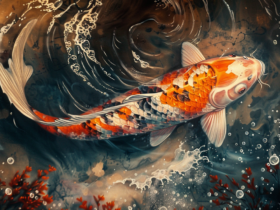From migrating tadpoles to peaceful monkeys to very determined ants, the winning images of the 60th annual Wildlife Photographer of the Year contest display rare wonders of the natural world that many people never get to see.
Widely known as the “Oscars” of wildlife photography, the contest drew in a record-breaking 59,228 entries this year, from 117 countries and territories. Each photograph was judged anonymously by an international panel of judges, who looked at its originality, technical excellence, narrative and ethical capture. The competition unveiled this year’s winners on Tuesday.
The Wildlife Photographer of the Year contest, developed and produced by the Natural History Museum, London, has operated for six decades, spotlighting the best nature images since 1965. Notably, the awarded photographs don’t shy away from the realities of nature—they show the beauty of wildlife but also display predation and the ways that human activity has affected animals.
“These are photographs that not only encourage further wildlife conservation efforts, but that spark the creation of real advocates for our planet on a global scale,” Doug Gurr, director of the Natural History Museum, says in a statement.
The museum shared a gallery of all the winning and highly commended images on its website, and in September, the contest released a preview of the recognized photos.
Below, see a selection of 15 winners, featuring breathtaking animal behaviors, tender familial interactions, the implications of human activity and the efforts of conservationists who work tirelessly to preserve species.
The Swarm of Life by Shane Gross
Western toad tadpoles swim toward the surface of Cedar Lake to feed in British Columbia, Canada. © Shane Gross, Wildlife Photographer of the Year/https://tf-cmsv2-smithsonianmag-media.s3.amazonaws.com/filer_public/5a/16/5a167c4f-6a08-4cc5-9fae-9ed61d1f3624/shane_gross_wildlife_photographer_of_the_year.jpg)
Beneath a layer of lily pads covering the water like a blanket, a legion of western toad tadpoles swims toward the surface of Canada’s Cedar Lake to feed.
The image, captured by Canadian photographer Shane Gross, won the grand title of Wildlife Photographer of the Year. He snorkeled for hours before obtaining this photograph, which highlights both the young toads and their environment. To avoid stirring up sediment that would have clouded the photo, Gross followed paths through the lily pads cleared by swimming beavers.
“The jury was captivated by the mix of light, energy and connectivity between the environment and the tadpoles,” says Kathy Moran, chair of the jury, in a statement. “We were equally excited by the addition of a new species to the Wildlife Photographer of the Year archive. Over the last few years, the competition has highlighted environments and species that are often overlooked yet provoke the same wonder and delight when shared as the more typically photographed wildlife and wild places.”
While tadpoles and other amphibians might not get a lot of attention in wildlife photography, their conservation needs are urgent. A study last fall revealed that two in five amphibian species across the planet are at risk of extinction.
“I hope the attention this image brings our amphibians and wetlands leads to much-needed and urgent protections,” Gross writes on Instagram.
Life Under Dead Wood by Alexis Tinker-Tsavalas
Beneath a log, two miniscule organisms—a springtail and a slime mold—are made large by the camera. © Alexis Tinker-Tsavalas, Wildlife Photographer of the Year/https://tf-cmsv2-smithsonianmag-media.s3.amazonaws.com/filer_public/e1/a6/e1a69e8a-14f9-4047-904a-a4b2afb17d86/alexis_tinker-tsavalas_wildlife_photographer_of_the_year.jpg)
Seventeen-year-old photographer Alexis Tinker-Tsavalas of Germany earned the title of Young Wildlife Photographer of the Year with his image of a springtail beside a slime mold.
He flipped over a log in Berlin to uncover this miniscule scene. Springtails are barely two millimeters long—the size of a grain of sand. To create this crisp image, he combined 36 photographs that each had a different area in focus.
“A photographer attempting to capture this moment not only brings great skill, but incredible attention to detail, patience and perseverance,” says jury chair Moran in a statement.
Springtails are tiny but crucial parts of soil ecosystems. They feed on bacteria and fungi, which helps organic matter decompose. The insect-like animals also have a fantastic ability to flip through the air while jumping, an exacting form of natural acrobatics that could inspire developments in robotics.
On Watch by John E Marriott
Two lynx shelter from the wind behind their parent, who looks into the camera. © John E Marriott, Wildlife Photographer of the Year/https://tf-cmsv2-smithsonianmag-media.s3.amazonaws.com/filer_public/10/7f/107fd7a4-4978-4212-835e-c518d4145a7e/john_marriott_wildlife_photographer_of_the_year.jpg)
Fresh lynx tracks alerted Canadian photographer John E Marriott to the presence of a family of the wild cats. He had been following the group for more than a week in the Yukon Territory, keeping a safe distance to avoid disturbing them.
His painstaking efforts—which involved toting camera gear and traipsing through forests in snowshoes—were rewarded with this photograph of a resting lynx with its adult offspring standing behind it, sheltering from the wind.
“To have got close to such an elusive, wary cat—widely trapped for its fur—is rare, but to have portrayed the whole family is extraordinary,” contest judge Roz Kidman Cox says in a statement.
Practice Makes Perfect by Jack Zhi
A young peregrine falcon practices its hunting skills on a butterfly. © Jack Zhi, Wildlife Photographer of the Year/https://tf-cmsv2-smithsonianmag-media.s3.amazonaws.com/filer_public/c3/49/c3497db4-92de-45cf-bde8-ed05a04eb0da/jack_zhi_wildlife_photographer_of_the_year.jpg)
Adult peregrine falcons are formidable hunters: Capable of diving at a breakneck 200 miles per hour to snatch prey out of the sky, the birds attain the fastest speeds on Earth.
But this juvenile peregrine falcon isn’t quite ready to take its place amid the more experienced, exacting predators of the species. For now, it’s practicing hunting skills on a butterfly.
American photographer Jack Zhi watched this young bird in Los Angeles. He had been coming to this site for eight years, becoming well acquainted with photographing the peregrine falcon chicks each spring. The birds quickly progressed as hunters, soon targeting gulls, pelicans and other birds.
Wetland Wrestle by Karine Aigner
A yellow anaconda and a yacaré caiman are frozen in a fight. © Karine Aigner, Wildlife Photographer of the Year/https://tf-cmsv2-smithsonianmag-media.s3.amazonaws.com/filer_public/2c/14/2c14ce5a-a99e-404e-9af8-38ec75b4aa21/karine_aigner_wildlife_photographer_of_the_year.jpg)
While American photographer Karine Aigner was leading a tour group in Mato Grosso, Brazil, the group paused to watch and photograph marsh deer. But Aigner’s attention was drawn to a strange shape in the water.
Looking through binoculars, she realized what it was: a yellow anaconda and a yacaré caiman. Each type of predator could feasibly eat the other. “It’s hard to determine who is the aggressor here,” according to a statement accompanying the image.
Given the composition of the photograph—“the still water with reflections, the two opponents staring, the snake taking time to taste the air with its tongue”—you can almost be fooled into thinking it displays a peaceful moment, contest judge Chien Lee says in the statement.
The Artful Crow by Jiří Hřebíček
A carrion crow on a branch appears to be painted due to a careful composition technqiue—the photographer moved the camera slightly as it captured a long exposure. © Jiri Hrebicek, Wildlife Photographer of the Year/https://tf-cmsv2-smithsonianmag-media.s3.amazonaws.com/filer_public/62/10/62106bbc-c6fa-4cf0-9a73-8cf096b229e3/jiri_hrebicek_wildlife_photographer_of_the_year.jpg)
Photographer Jiří Hřebíček of the Czech Republic used a long shutter speed and shifted his camera deliberately to immortalize this carrion crow. These subtle movements created a blur that makes the image “elegant and haunting,” Moran says in a statement.
“The movement is just enough to give it an edge, but not enough to take away from the mood created by the light and the perfect placement of the bird,” she adds.
Intelligent and well-adapted to life around humans, carrion crows like this one often gather in a park in Basel, Switzerland. Earlier this year, researchers found that they could train three carrion crows to “count” up to four.
Under the Waterline by Matthew Smith
A leopard seal approaches the camera in waters off Antarctica. © Matthew Smith, Wildlife Photographer of the Year/https://tf-cmsv2-smithsonianmag-media.s3.amazonaws.com/filer_public/d9/ad/d9ad969d-bd3c-4b92-a5fd-af50004c980b/matthew_smith_wildlife_photographer_of_the_year.jpg)
This intimate image represents the first time that photographer Matthew Smith has ever encountered a leopard seal. In Paradise Bay, Antarctica, he toted a custom-made camera lens that enabled him to capture the scene both above and below the water.
The mammal swam around Smith curiously, making several passes by his camera. “When it looked straight into the lens barrel, I knew I had something good,” says the photographer based in the United Kingdom and Australia in a statement.
Currently, leopard seals are abundant. But with warming oceans and disappearing sea ice caused by climate change, along with the threat of overfishing, the seals’ main food sources—krill and penguins—are disappearing.
To contest judge Tony Wu, this image is a reminder of the ways that humans have put these marine mammals at risk. “A single leopard seal staring straight into the camera seems almost like a sentinel, admonishing humanity for the shrinking sea ice on which it depends,” Wu says in the statement.
Frontier of the Lynx by Igor Metelskiy
Lit by the early evening sun, a lynx stretches majestically in front of snowy mountains in Russia. © Igor Metelskiy, Wildlife Photographer of the Year/https://tf-cmsv2-smithsonianmag-media.s3.amazonaws.com/filer_public/87/a0/87a01473-0e78-4d5a-905f-4afd7bab60a8/igor_metelskiy_wildlife_photographer_of_the_year.jpg)
A 2013 survey estimated the Russian lynx population stood at around 22,500 of the wild cats. For the Russian Far East, that number was just 5,890.
That makes this image a relatively rare photograph of a lynx in Primorsky Krai in eastern Russia. Photographer Igor Metelskiy of Russia waited for six months to capture this shot, his camera trap placed near footprints of prey in a remote and difficult-to-access location.
In stark contrast to the photographer’s efforts, the lynx appears relaxed, stretching in front of the majestic landscape. While Metelskiy spent half a year preparing this shot, the lynx “simply saunters through, takes a bow, leaves a photograph and moves on,” Moran says in a statement.
The Demolition Squad by Ingo Arndt
Red wood ants work together to dismember a blue ground beetle in Hessen, Germany. © Ingo Arndt, Wildlife Photographer of the Year/https://tf-cmsv2-smithsonianmag-media.s3.amazonaws.com/filer_public/3f/a3/3fa3ea4c-9e13-49d7-80d0-d2367cd82435/ingo_arndt_wildlife_photographer_of_the_year.jpg)
Though red wood ants typically eat the sugary honeydew secreted by aphids, sometimes, they’ll opt for a meal with more protein. Aided by their numbers, the ants can kill other insects by overpowering them. In this case, a group of ants dismember an already dead blue ground beetle so they can transport it into their nest.
“I can feel—almost hear—the energy of the swarm while I marvel at the single-minded dedication of the lone ant scaling to the summit of the beetle,” contest judge Wu says in a statement.
German photographer Ingo Arndt captured this image in Hessen, Germany. To get the perfect angle, he had to lie on the ground near the ants’ nest. After just a few minutes there, he was “full of ant,” he says in the statement.
A Diet of Deadly Plastic by Justin Gilligan
Found in the digestive tract of a flesh-footed shearwater bird, these 403 pieces of plastic illustrate the problem of pollution in the oceans. © Justin Gilligan, Wildlife Photographer of the Year/https://tf-cmsv2-smithsonianmag-media.s3.amazonaws.com/filer_public/c0/3c/c03c1c2f-b03b-4d77-b374-afe2e8d2f77d/justin_gilligan_wildlife_photographer_of_the_year.jpg)
Plastics are everywhere—a recent study found that humans pollute the environment with more than 57 million tons of plastic annually, and that number doesn’t include the plastic waste that’s properly disposed of. Every year, an estimated eight million tons of plastic enter the oceans. These plastics break down into smaller pieces, release chemicals into the environment and pose a risk to wildlife.
In this chilling image, Australian photographer Justin Gilligan designed a mosaic from the 403 bits of plastic found in the digestive tract of a single, dead flesh-footed shearwater.
The dusky-colored seabird had been collected on Lord Howe Island in New South Wales, Australia, where breeding colonies of the species raise young. Researchers on the island found that about 75 percent of adults—and all fledglings—had plastic in their bodies. Ingesting the man-made material can lead to scarring of the digestive tract, known as plasticosis, per a statement.
“Photography is one of the most important tools for the most important message of all time—humanity needs to find a new way of relating to the planet,” says contest judge Luciano Candisani in the statement. “The image is touching and powerfully questions us about ourselves.”
Old Man of the Glen by Fortunato Gatto
In an ancient pinewood forest, a gnarled birch tree stands out for the “old man’s beard” lichens adorning its branches. © Fortunato Gatto, Wildlife Photographer of the Year/https://tf-cmsv2-smithsonianmag-media.s3.amazonaws.com/filer_public/b8/b2/b8b270cd-4d82-4a37-8aaf-9651af1163dd/fortunato_gatto_wildlife_photographer_of_the_year.jpg)
A sign of low air pollution, pale-colored lichen coats a twisting branch of an old birch tree in this artful image by Italian photographer Fortunato Gatto. The lichen is known as “old man’s beard.”
And the surrounding forest is also ancient: Researchers have analyzed pollen preserved in the sediments in the forest floor, revealing that the ecosystem has stood for at least 8,300 years. Known as the Glen Affric pinewoods, the area hosts the highest concentration of native trees in the U.K.
Candisani praises the composition of the photograph. “The colors are beautiful, and the atmosphere is very interesting, but it’s the diagonal branch that directs the eye,” he says in a statement.
Tiger in Town by Robin Darius Conz
A tiger lounges on a grassy hillside with a village visible downslope. © Robin Darius Conz, Wildlife Photographer of the Year/https://tf-cmsv2-smithsonianmag-media.s3.amazonaws.com/filer_public/a6/8b/a68b4584-d4b9-48c7-8aba-83d46cda974f/robin_darius_wildlife_photographer_of_the_year.jpg)
For two years, German photographer Robin Darius Conz has been working on a documentary in the Nilgiris district in the Western Ghats mountain range in India. His experience has “created some exciting moments,” he writes on Instagram, and among them was finding this tiger.
He followed the creature for several hours with his drone, before the mammal reclined on a hillside in front of a town that used to be a forest.
“We initially revel in seeing a tiger seemingly at ease, out in the open, but as you move through the frame, reality hits hard,” says Moran in a statement. “Where’s the forest, what’s happened to the habitat?”
While conflict between humans and tigers has threatened the large mammals across other parts of India, the biodiverse landscapes in the Western Ghats, where tiger populations are monitored, have allowed the big cats to thrive.
Dusting for New Evidence by Britta Jaschinski
A crime scene investigator from London’s Metropolitan Police dusts a confiscated elephant tusk for prints. © Britta Jaschinski, Wildlife Photographer of the Year/https://tf-cmsv2-smithsonianmag-media.s3.amazonaws.com/filer_public/35/87/3587a550-7c9f-466c-a596-70cbb172ca92/britta_jaschinski_wildlife_photographer_of_the_year.jpg)
Photojournalist Britta Jaschinski of Germany and the U.K. visited the CITES Border Force Department at Heathrow Airport in London to document how officials investigate wildlife trafficking.
In the past, elephant tusks—made of ivory, a porous material—would absorb fingerprints within about a day, making it impossible for investigators to use them to trace who was involved in the illegal trade.
Now, a new magnetic powder developed by researchers in London can lift prints from an ivory tusk for about a month after they were made. The innovation has been able to identify prints on tiger claws, rhino horns, pangolin scales and other wildlife, the photographer writes on Instagram.
“The composition is precisely set to tell a story, one that’s instantly understood,” says contest judge Kidman Cox in a statement. “It’s lit to perfection, with the fingerprints clear, and there’s care in the way the tusk is displayed, as a thing of great value and poignancy.”
Hope for the Ninu by Jannico Kelk
Photographed near its burrow, a ninu (also called a greater bilby), lives in the security of a fenced-in, predator-free reserve. © Jannico Kelk, Wildlife Photographer of the Year/https://tf-cmsv2-smithsonianmag-media.s3.amazonaws.com/filer_public/4b/d9/4bd99533-7056-4002-b44e-49bde7055056/jannico_kelk_wildlife_photographer_of_the_year.jpg)
The ninu, also known as the greater bilby, is a rabbit-sized marsupial that was nearly driven to extinction in Australia after invasive predators such as foxes and cats were introduced to its habitat. But within the fenced, predator-free reserves built by conservationists, the species has been thriving.
Australian photographer Jannico Kelk found this small creature by looking for its footprints in sand dunes within one of these reserves, run by Arid Recovery in South Australia. He set up a camera trap once he discovered the ninu’s burrow.
Representing a story of conservation success, Kelk’s image won the contest’s first-ever Impact Award. The ninu is a crucial ecosystem engineer that enhances soil structure and water retention by digging in the ground in arid landscapes. Its activities can even create homes for other species.
A Tranquil Moment by Hikkaduwa Liyanage Prasantha Vinod
A young toque macaque sleeps in the arms of an adult. © Hikkaduwa Liyanage Prasantha Vinod, Wildlife Photographer of the Year/https://tf-cmsv2-smithsonianmag-media.s3.amazonaws.com/filer_public/dd/ac/ddac63e3-1d41-4e39-9933-f181c1da1e03/hikkaduwa_liyanage_prasantha_vinod_wildlife_photographer_of_the_year.jpg)
Sri Lankan photographer Hikkaduwa Liyanage Prasantha Vinod had just finished a morning of photographing leopards and birds in Wilpattu National Park, when he noticed movement above him in the trees.
Amid the troop of toque macaques passing by over his head, Vinod found this peaceful baby, resting in its mother’s arms. With a telephoto lens, he zoomed in on the quiet moment and the young animal’s tranquil expression.
“The infant macaque’s head is perfectly positioned against the white of the mother’s chest while the curve of the adult’s leg and the curl of the babe’s arm hold them together in this serene moment,” Moran says in a statement. The image is “so simple yet so beautiful.”













Leave a Reply